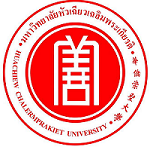Please use this identifier to cite or link to this item:
https://has.hcu.ac.th/jspui/handle/123456789/3147| Title: | วัฒนธรรมอาหารไทยในสังคมจีน: กรณีศึกษานครหนานหนิง เขตปกครองตนเองชนชาติ จ้วงกว่างซี สาธารณรัฐประชาชนจีน |
| Other Titles: | Thai Food Culture in Chinese Society: A Case Study of Nanning City in Guangxi Zhuang Autonomous Region, People’s Republic of China |
| Authors: | Liang Junping ธีรโชติ เกิดแก้ว Teerachoot Kerdkaew Huachiew Chalermprakiet University. Faculty of Liberal Arts. Student of Doctor of Arts Program Huachiew Chalermprakiet University. Faculty of Liberal Arts |
| Keywords: | หนานหนิง (จีน) Nanning (China) อาหารไทย Thai food อัตลักษณ์ Identity (Philosophical concept) อาหารไทย – แง่สังคม Thai food – Social aspects ชาวจีน Chinese |
| Issue Date: | 2023 |
| Abstract: | บทความวิจัยนี้มีวัตถุประสงค์เพื่อศึกษาความเป็นมา อัตลักษณ์อิทธิพลของอาหารไทย และการเปลี่ยนแปลงของอาหารไทยในนครหนานหนิง เขตปกครองตนเองชนชาติจ้วงกว่างซี สาธารณรัฐประชาชนจีน ใช้ระเบียบวิธีวิจัยแบบผสมผสานทั้งเชิงปริมาณและเชิงคุณภาพ ผลการวิจัยพบว่า (1) ด้านความเป็นมาของอาหารไทยในนครหนานหนิงเกิดขึ้นเพื่อตอบสนองความต้องการของนักเรียนไทยที่ศึกษาอยู่ในพื้นที่นั้น และอัตลักษณ์ของอาหารไทยที่ทำให้ชาวจีนจดจำและประทับใจคือ วิธีการปรุงแบบดั้งเดิม รสชาติที่เผ็ด เปรี้ยว หวาน วัตถุดิบที่สดใหม่ รูปแบบหรือสีสันที่สวยงาม สรรพคุณด้านสุขภาพ วิธีการ รับประทานที่เรียบง่าย และการตกแต่งร้านและบรรยากาศภายในร้านแบบไทย (2) ด้านอิทธิพลของวัฒนธรรมอาหารไทยที่มีต่อผู้บริโภคชาวจีนคือ ทำให้เกิดทางเลือกในการบริโภคอาหาร ทำให้ได้รับรู้ วัฒนธรรมอาหารและวัฒนธรรมด้านอื่น ๆ ของไทย กระตุ้นให้ชาวจีนอยากไปท่องเที่ยวหรือใช้ชีวิตที่ไทย (3) ด้านการเปลี่ยนแปลงพบ 5 ด้าน คือ การตั้งชื่อร้านที่ต้องมีคำว่า“泰” (ไทย) ใช้คำที่ค้นหูหรือคำที่ แสดงเอกลักษณ์ไทย ประเภทของร้านที่มีทั้งร้านที่ชาวไทยเป็นเจ้าของและเชฟเป็นชาวไทย ร้านที่ชาวไทย กับชาวจีนร่วมธุรกิจกัน และร้านที่ชาวจีนเป็นเจ้าของและเป็นผู้ทำอาหารไทยเอง วัตถุดิบที่มีการนำ วัตถุดิบในพื้นที่มาใช้แทนวัตถุดิบที่นำเข้าจากไทย รสชาติอาหารที่ปรับให้ตรงกับความต้องการของลูกค้า และบรรยากาศในร้านที่ตกแต่งแบบไทยเพื่อให้แตกต่างจากร้านอาหารอื่น ๆ และให้ลูกค้าจดจำ This qualitative research aims to 1) study the background and identities of Thai food from the perspective of Chinese people in Nanning City of Guangxi Zhuang Autonomous Region; 2) observe influences of Thai food culture toward Chinese people in Nanning City; and 3) note the transformations of Thai food in Nanning City. Documentary study and data collection from field trips are research methodologies. Research findings include 1) Thai food has been demanded by Asian students studying in Nanning City; Chinese people regard the sour and spicy tastes as identity of Thai original recipes which include varieties of seafood added rich seasonings that good for health. 2) Influences of Thai food culture toward Chinese consumers, Thai food is an alternative food in Nanning City; Chinese people are aware of Thai food culture and interested in visiting or living in Thailand. 3) Transformations of Thai food in Nanning City, including Thai food shops are always named with the word ‘Thai’ (泰) and could be sorted into three types, running by Thai owners; Thai-Chinese cooperation; and/or Chinese entrepreneurs. For food ingredients, some substitutions are used, and tastes are adjusted to Chinese tongues, while shop atmosphere is usually based on Thai style. |
| Description: | สามารถเข้าถึงบทความฉบับเต็ม (Full text) ได้ที่ :
https://www.hu.ac.th/conference/conference2023/proceedings/doc/04%20%E0%B8%A1%E0%B8%99%E0%B8%B8%E0%B8%A9%E0%B8%A2%E0%B8%A8%E0%B8%B2%E0%B8%AA%E0%B8%95%E0%B8%A3%E0%B9%8C%20Hu/6-Hu-058%20(295-311).pdf การประชุมหาดใหญ่วิชาการระดับชาติและนานาชาติ ครั้งที่ 14 (14th Hatyai National and International Conference) วันศุกร์ที่ 14 พฤษภาคม 2566 ณ ห้องประชุม Blue Ocean Hall อาคารคณะบริหารธุรกิจ โดย มหาวิทยาลัยหาดใหญ่ อำเภอหาดใหญ่ จังหวัดสงขลา และ Online Conference : หน้า 295-311 |
| URI: | https://has.hcu.ac.th/jspui/handle/123456789/3147 |
| Appears in Collections: | Liberal Arts - Proceeding Document |
Files in This Item:
| File | Description | Size | Format | |
|---|---|---|---|---|
| Thai-Food-Culture-in-Chinese-Society.pdf | 108.45 kB | Adobe PDF | View/Open |
Items in DSpace are protected by copyright, with all rights reserved, unless otherwise indicated.
